There’s a whole swathe of folk who’ll be very happy on board this Boardman
- Brand: Boardman
- Product: MTR 9.0
- Price: £2,400.00
- From: Halfords
- Tested by: Benji for 4 months
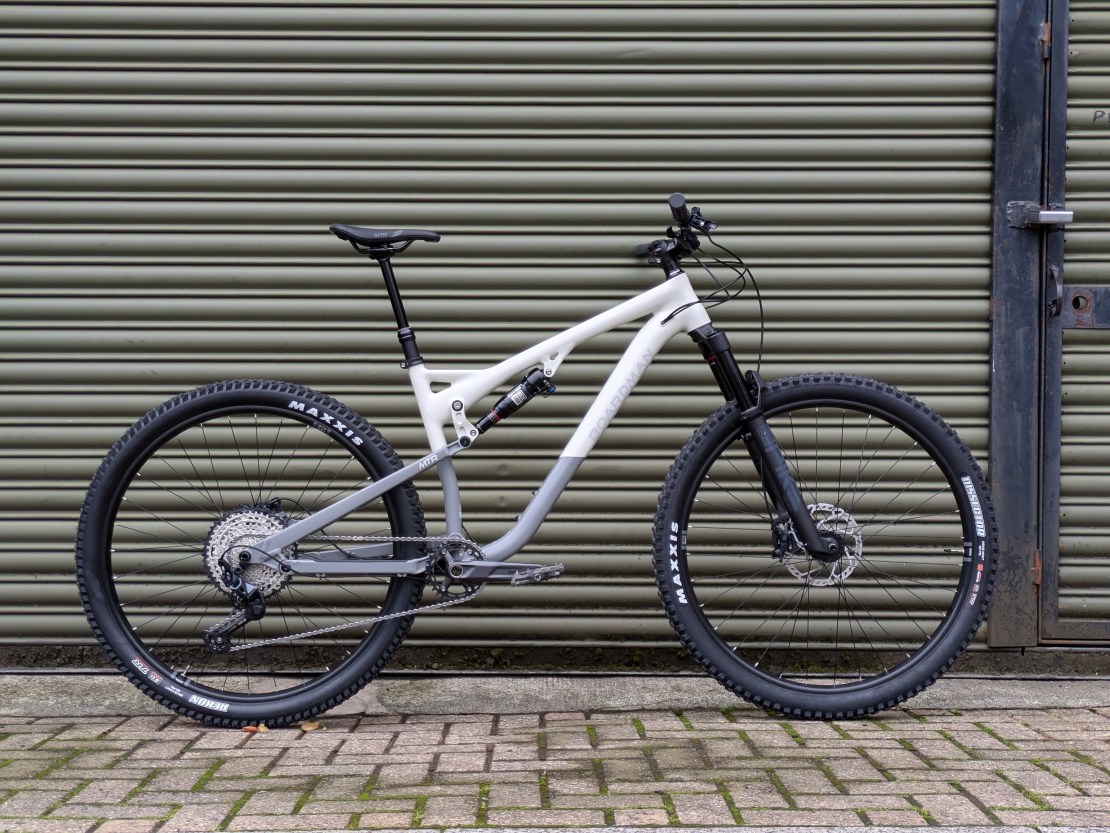
Pros
- Excellent Down-Country (yeah, I know) mountain bike
- Great suspension and chassis feel
- Not really a trail bike anymore
Cons
- Not a lot of room for future tweakings (spec is ‘fine’, and headtube won’t take angle-adjust headset)
- Not really a trail bike anymore
Our rating
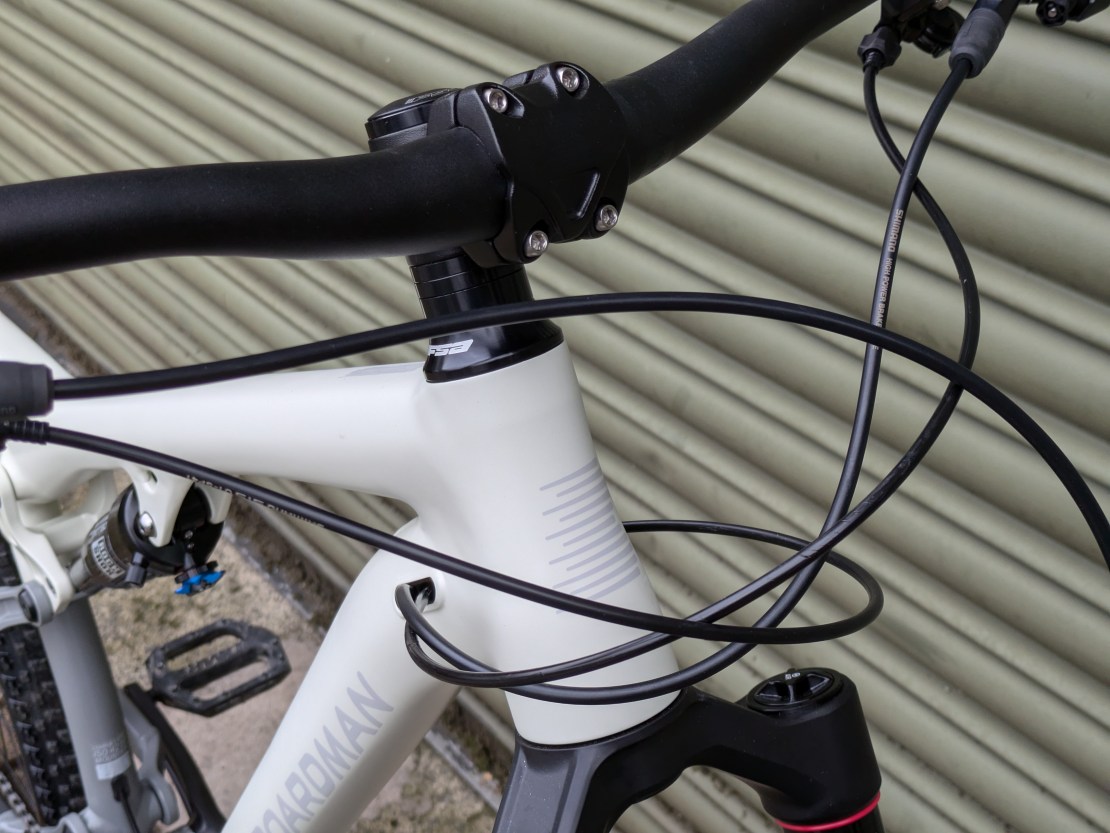
The Boardman MTR is a trend bucker. Whereas most bike models creep up in suspension travel a few mm with every reincarnation, the new MTR has dropped in travel. What used to be a 140mm rear travel bike (with a 150mm travel fork) is now 130mm at both ends.
Is this significant? It principally depends on how you prefer to categorise your mountain bikes. If you prefer to bracket bikes together based on how many mm of rear travel they offer (which is a very understandable and common method) then this new Boardman MTR becomes an opponent to the fabulous Calibre Bossnut (our 2024 Bike Of The Year).
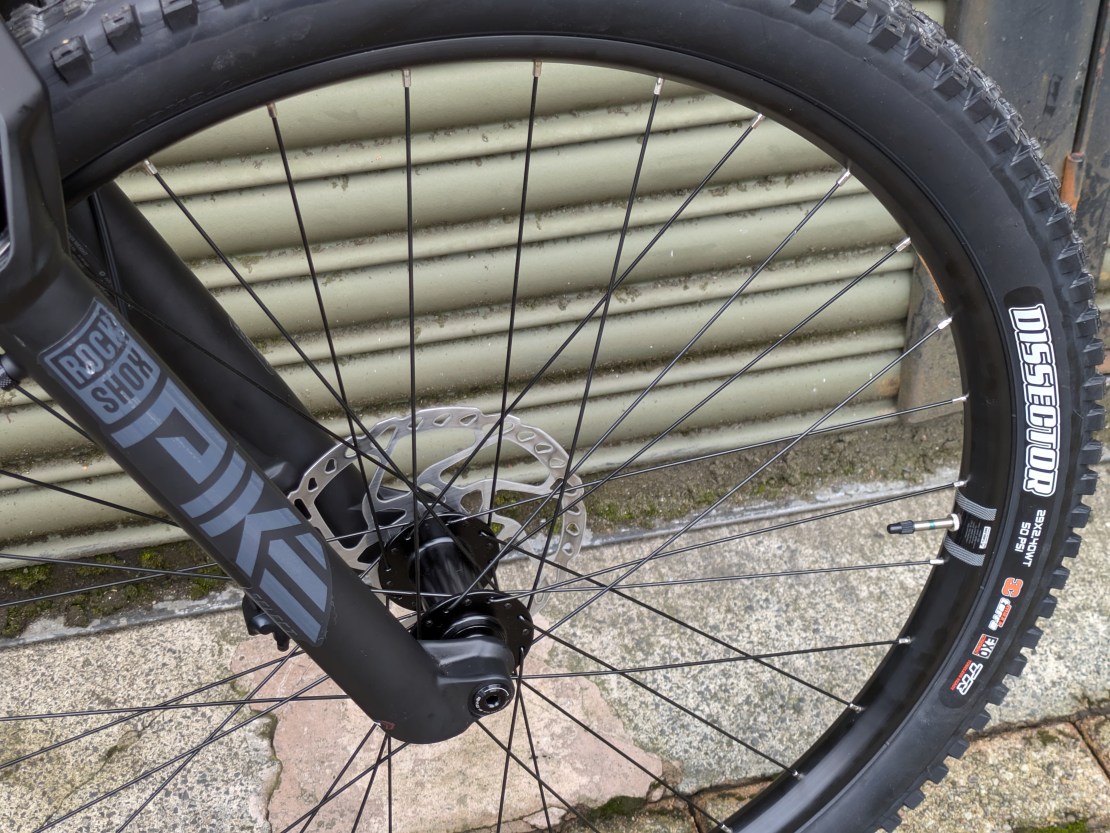
But it isn’t really. Although sort of similar in suspension travel (130mm vs 135mm) the Bossnut is very much a modern, super capable, trail bike. The Boardman MTR feels a lot less of a bruiser. And that is both a ‘good’ and a ‘bad’ thing, depending on your desires and expectations.

Although journalistic tradition dictates that I’m not supposed to come out with conclusion type stuff until the end of the review, I’m going to come out early and state that although the MTR has the better suspension dampers and outshines the Bossnut in a couple of component areas (wider-range drivetrain mainly), the Bossnut is the more technically capable mountain bike. Solely by virtue of its geometry.
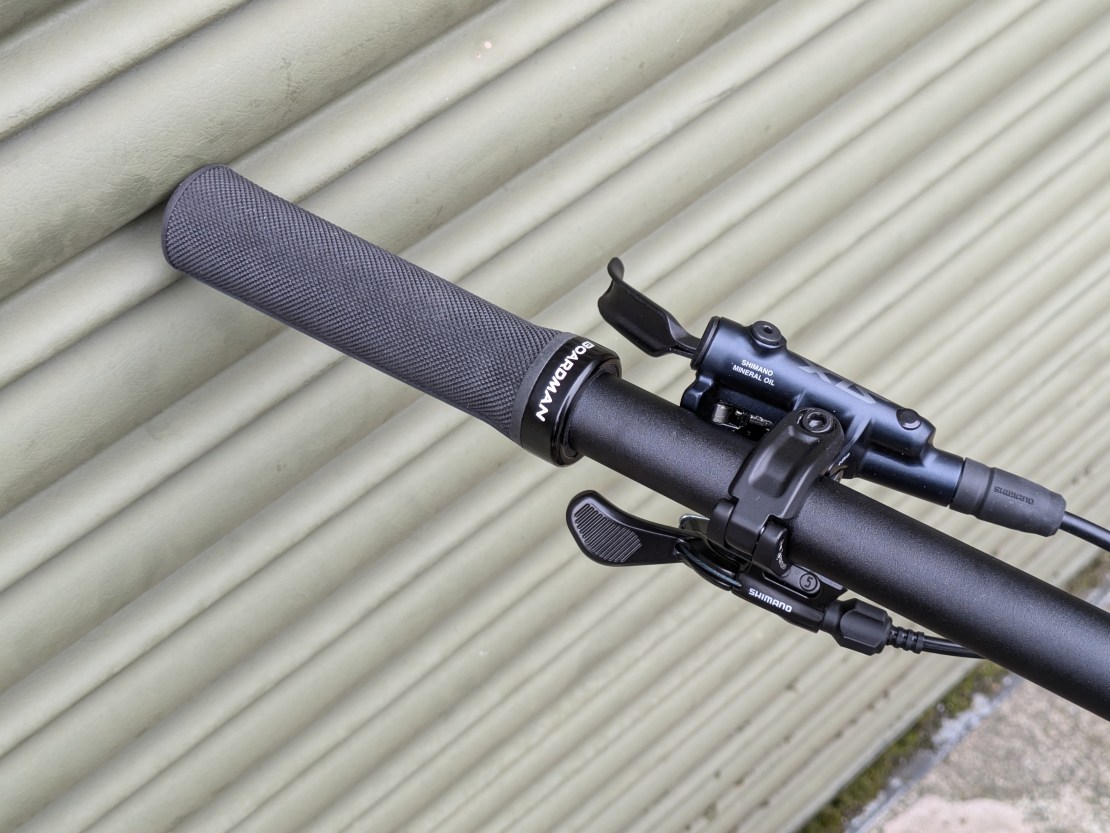
Coming from the Bossnut, the Boardman feels a bit steep and high. It doesn’t take that many mm of geometry differences to add up. The shorter wheelbase (caused by the steeper head angle and shorter chainstays) is very noticeable.
But, you know what? The Boardman will suit a while plethora of riders and terrain. If your trails aren’t especially steep (uphill or downhill) then the nippy hustle of the MTR will work just fine. The Boardman certainly feels the faster bike when on moderate terrain (even if the stopwatch says the difference is basically nil). And after all, it is feeling that is arguably the whole raison d’etre of mountain biking in the first place. If a bike feels fast, even if it isn’t really, then that’s what matters to the majority of riders.
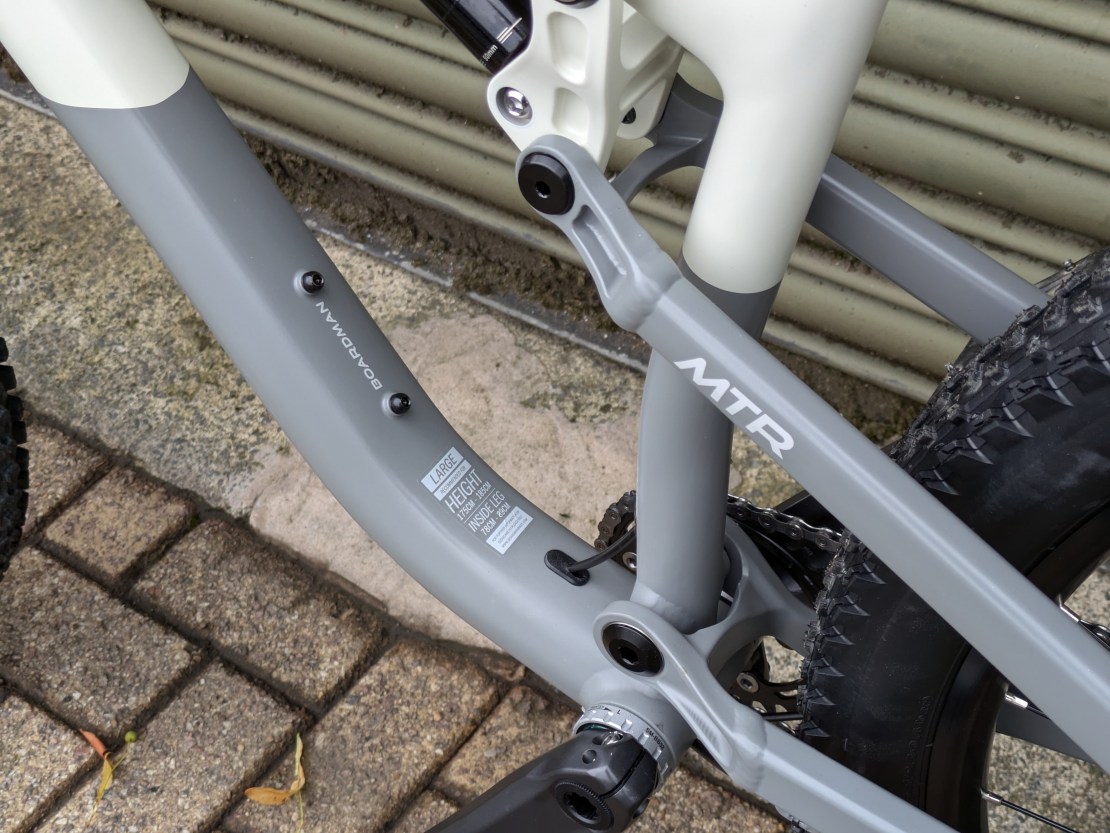
Although it may sound jarring when discussing what is essentially a Halfords bike, I would point out there’s no possibility of radding-up the MTR’s geometry with an angle-adjust headset (which would slacken the head angle and lower the BB a smidge) due to the use of an integrated headset type. Boo!
All of this is a very round-about way of saying that the Boardman MTR has dropped any intention/pretence of being a trail bike, and is now attempting to join the Down-Country (groan) crew. And as such I actually think Boardman has done extremely well here. You may scoff but the ride of the MTR is not a million miles away from the iconic Transition Spur. The key difference is BB height; the Spur is super low slung (40mm BB drop vs 33mm). Regardless, the handling and suspension action are very, very close.
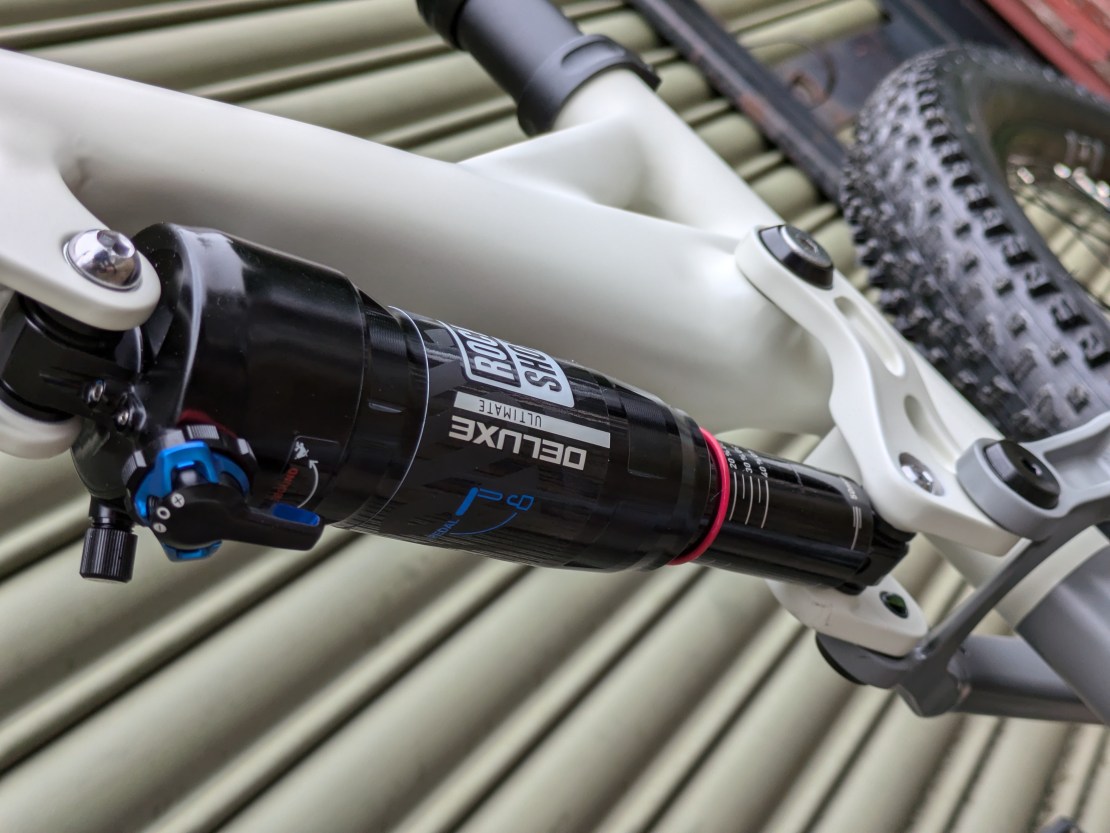
What is the handling experience like then? Fast feeling and extremely fun. It’s bike where it’s good that you can always feel when you’re on your personal limit, because you will be on it a whole lot of the time! The MTR is not a bike that needs to be on the scary stuff for it to feel exciting or rewarding. The fork and the frame work really, really well together. The suspension performance is impressively sporting and ‘rally car’ firm. Firm but still fluid. Not brittle, notchy or unpredictable.
Whilst its natural home is not the aforementioned scary stuff, the capable brakes and the effective suspension really do help you negotiate more hair-raising terrain than you’d expect. Admittedly, this is only true if you ‘double drop’ the seatpost into the frame collar – and fit less-sketchy tyres. But the potential is there.
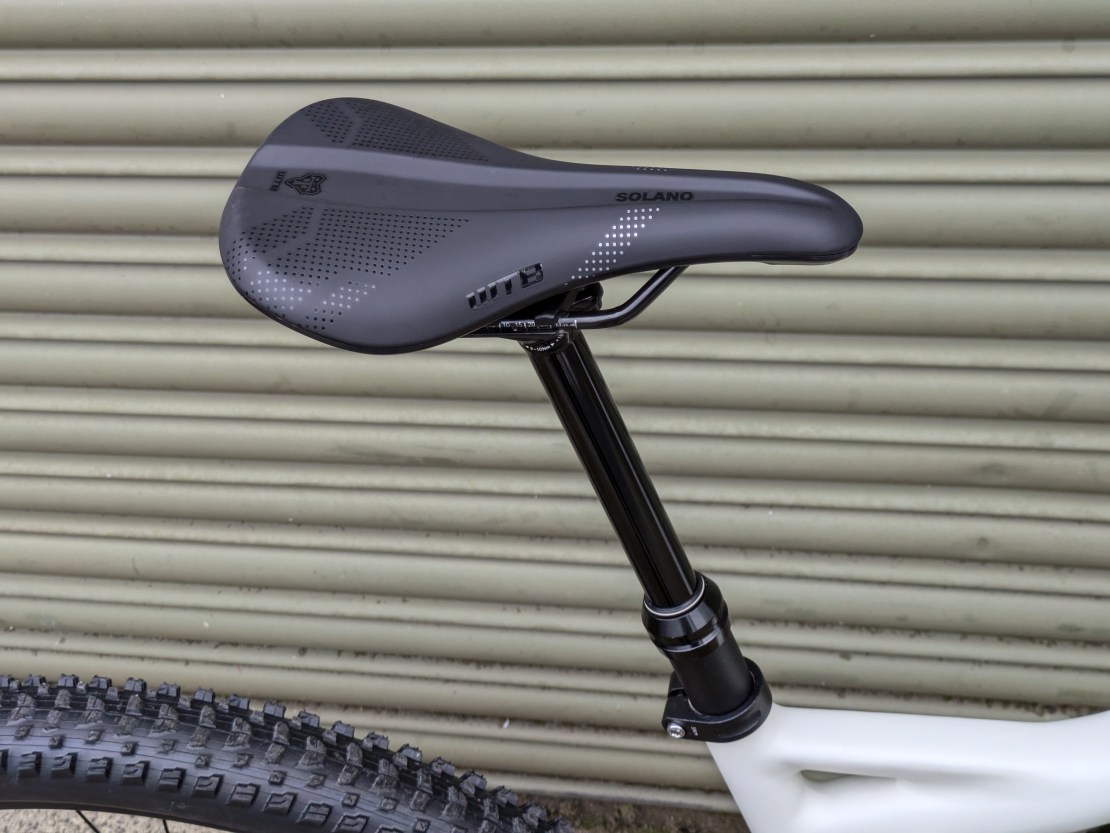
The other good/bad (depending how you look at it) aspect of this £2,400 MTR 9.0 is that there’s not much of an upgrade path. Aside from perhaps a longer travel dropper (150mm feels very short these days), there’s no real reward to be had by investing more money in this bike over the ensuing years. Off-the-peg, this bike is as good as it can be. Which, to be honest, is what the average ‘just want to ride my bike thanks’ punter will appreciate.
Partly because the upgrade path is so minimal, I will go into a bit of detail as to the performance of the bike’s spec.
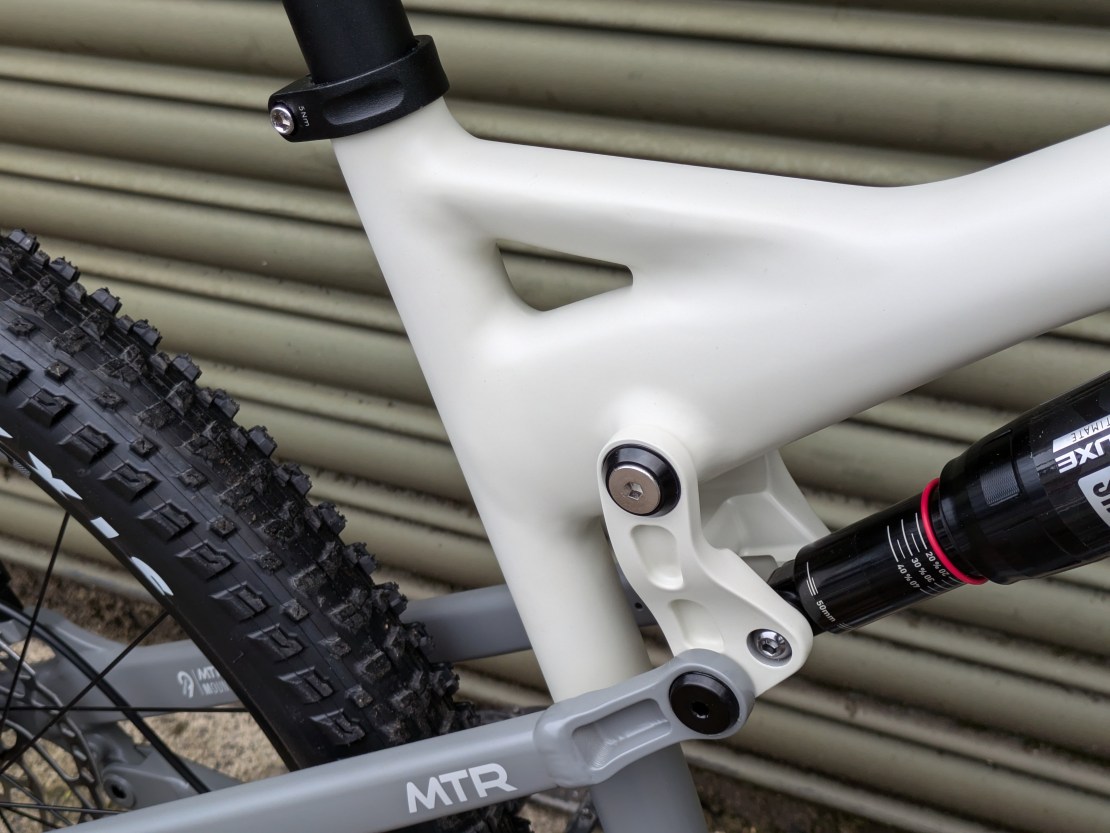
The frame is another reminder of how nice aluminium bikes can be. The Boardman MTR frame is not dead feeling, nor unforgiving, nor nervous, nor twangy. It feels very consistent and predictable. Helpfully neutral without being dull. It’s also a nicely made frame in terms of fabrication, welding and finish. All the pivots have decent bearings to them too.
The 12-speed Shimano Deore drivetrain just… works. It uses a modern Microspline freehub so you can upgrade to higher quality cassette once the original one wears out. The largest cassette sprocket is 51T. The chainring is 32T, which can accept a 30T once it comes time for replacement should you want slightly easier gearing.
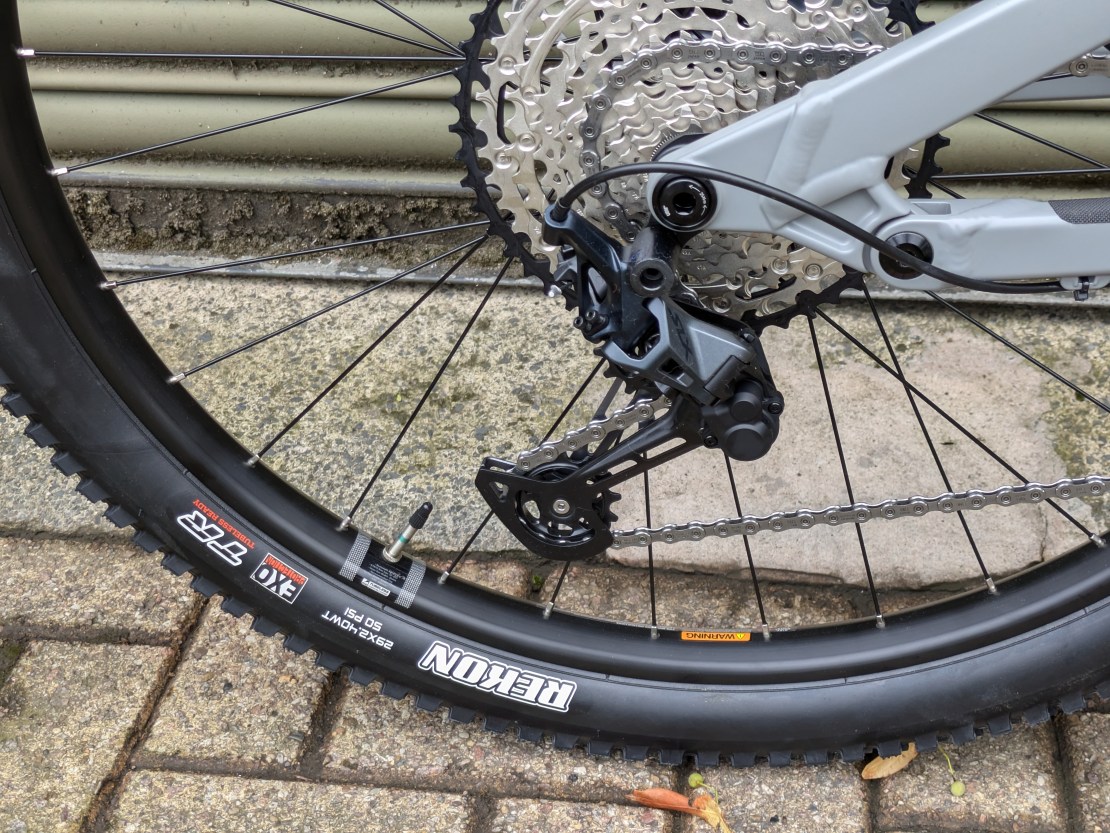
Similarly, the Shimano SLX 4-pot brakes were sterling performers. And the supplied 180/180mm rotors are all you’ll need for the general remit of this bike in my opinion.
As regards round things, the WTB wheels are perhaps the items that would benefit from being replaced at some point; lighter weight wheels always add a bit of not-free speed to a bike. That said, there’s nothing overtly wrong with the WTB i30 wheels. They can be made tubeless and are 30mm wide internally so work with decent modern tyres.
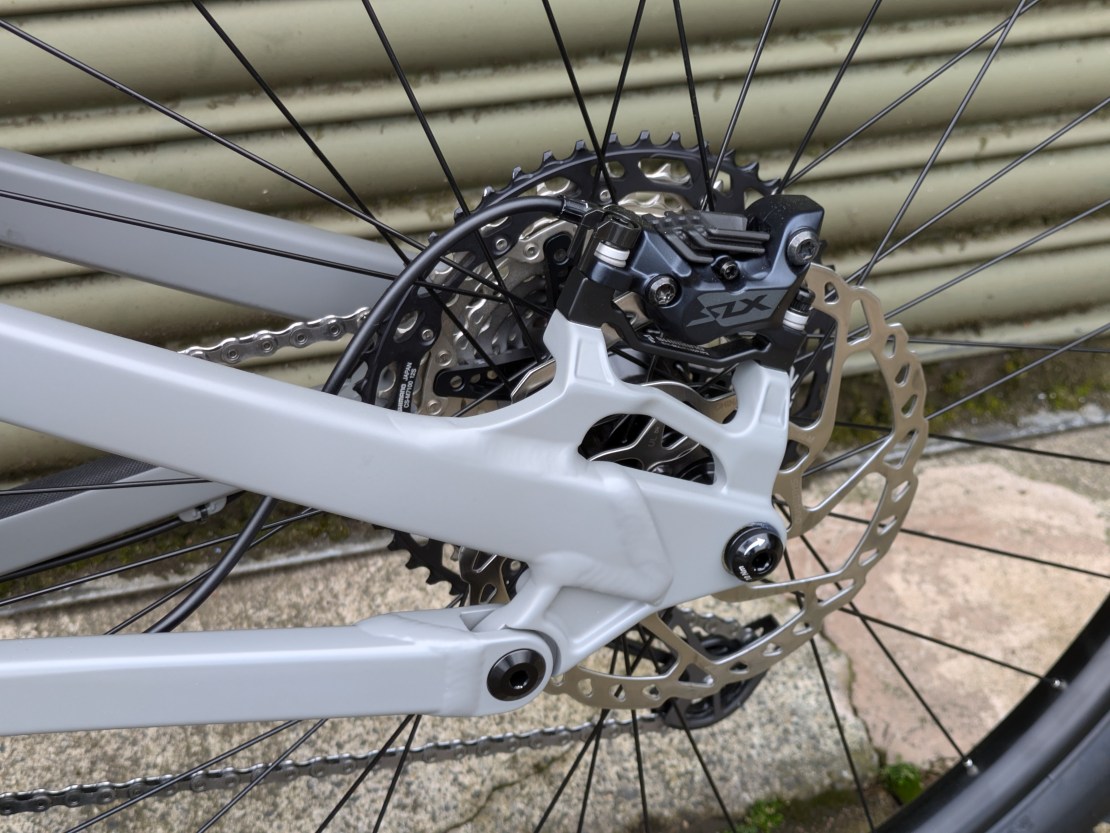
The finishing kit isn’t exactly exciting – it’s pretty much all black own-brand stuff – but it all works well and is of appropriate dimensions for the bike. The exceptions being where you sit. The saddle isn’t own brand (is a super nice WTB Solano). The no-name dropper post could arguably do with having more drop (170mm minimum on the larger frame sizes would be much better).
The Maxxis Dissector (‘old’ version) and Rekon tyres are not my favourite tyres in the world (I find they just lack bite when braking and cornering) but ‘your mileage may vary’, as they say. To be frank, it’s rare that any test bike (at any price point) has tyres that I’m entirely happy with. This pairing does undeniably add to the speedy feel of the bike but it does so at too much of a compromise in traction. Something like Maxxis Dissector (the new version) up front and a Maxxis Forekaster on the rear would be much more capable without sacrificing much in the way of rolling speed.
Overall
It may no longer have trail bike aspirations but the new Boardman MTR is a surprisingly great Down-Country mountain bike. Think less of Calibre Bossnut rival and more of an affordable Transition Spur type bike. Great suspension, nice feeling frame, no-nonsense drivetrain and decent brakes. There’s a whole swathe of folk who’ll be very happy on board this Boardman.
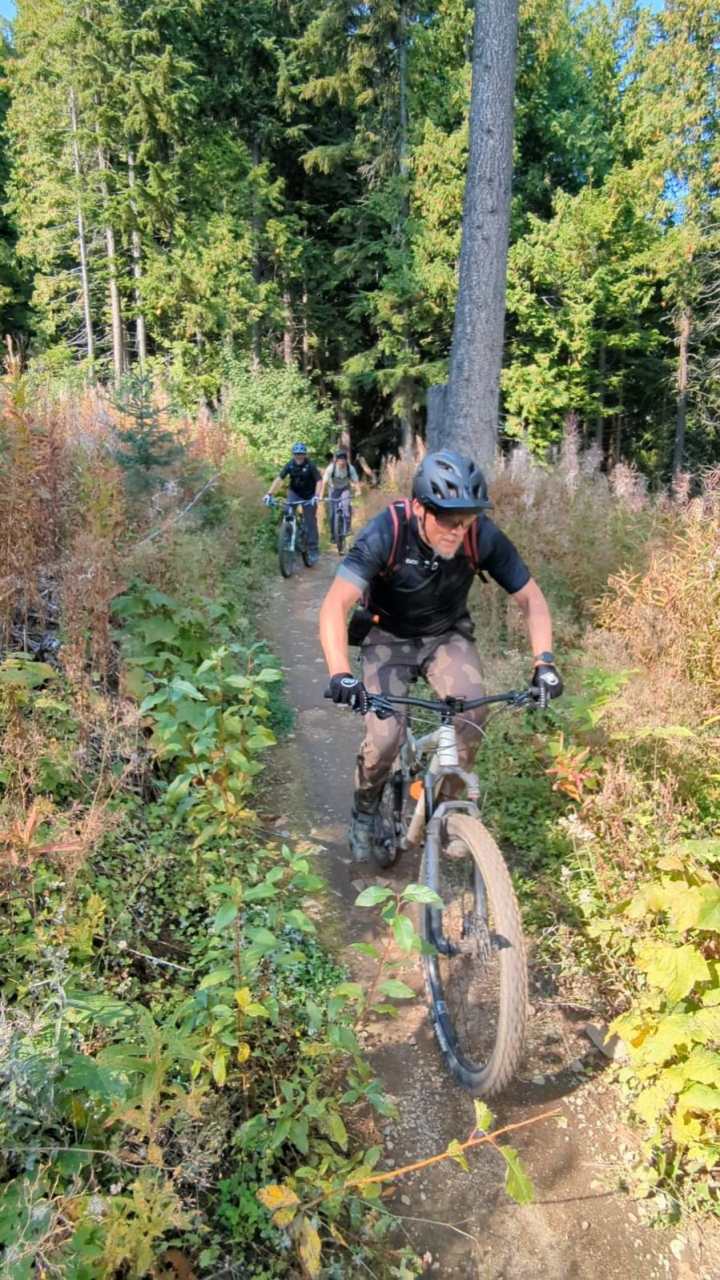
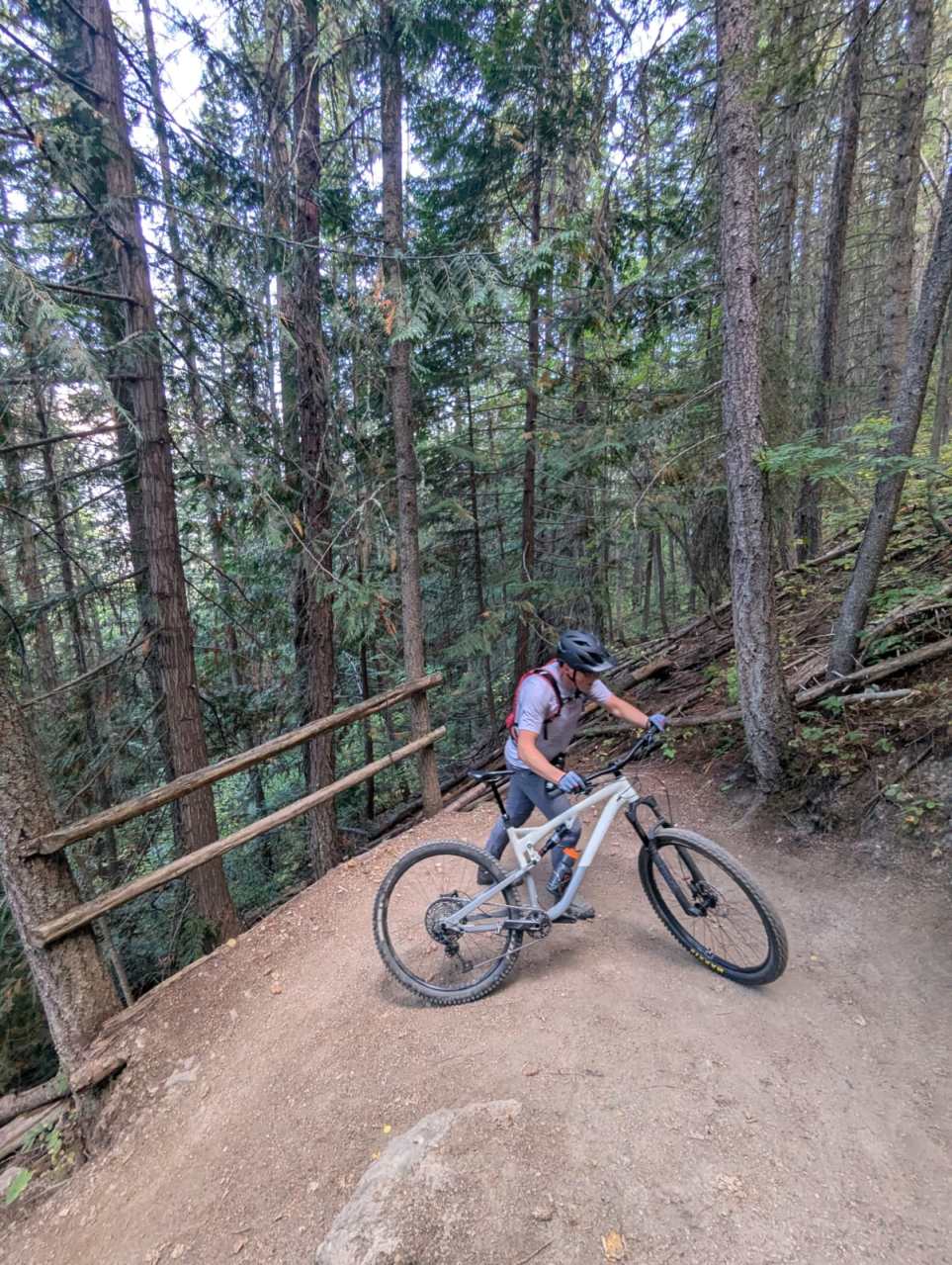
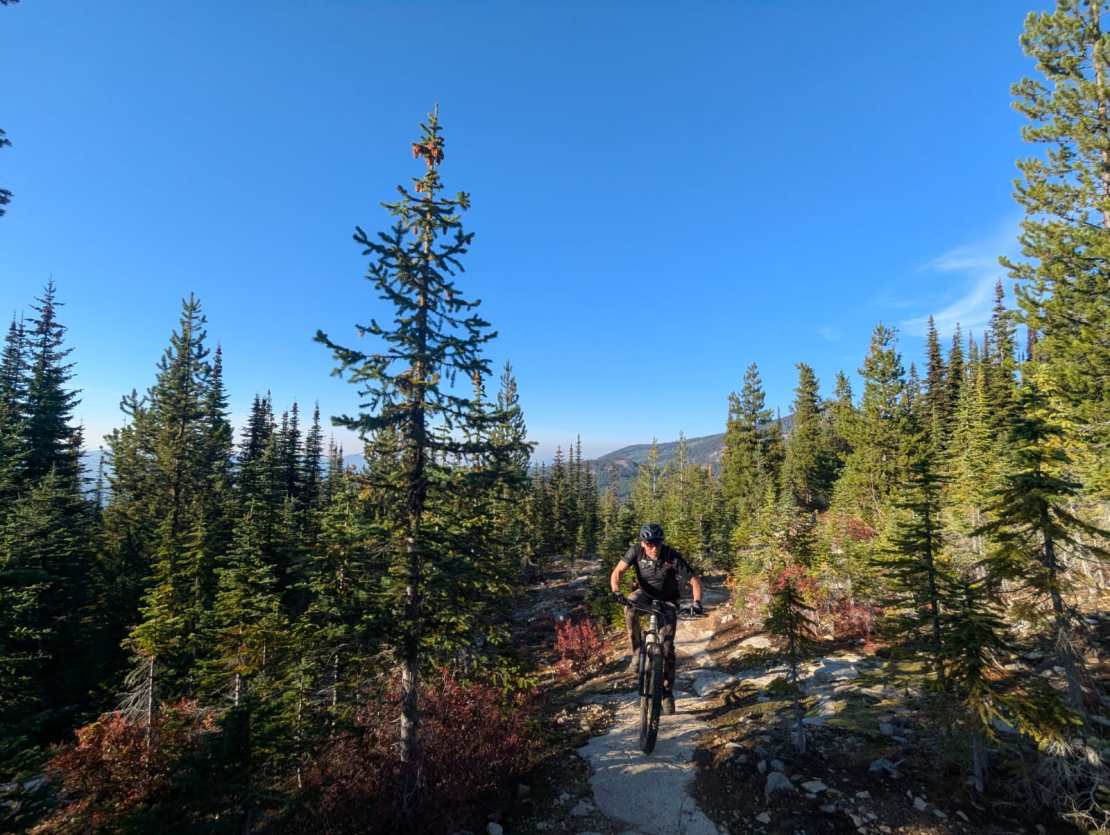
Boardman MTR 9.0 specification
- Frame // 6061 Butted Aluminium, 130mm
- Shock // RockShox Deluxe Ultimate RCT
- Fork // RockShox Pike Select, 130mm
- Wheels // WTB i30
- Front Tyre // Maxxis Dissector EXO TR 29×2.4in
- Rear Tyre // Maxxis Rekon 3C MAXXTERRA EXO TR 29×2.4in
- Chainset // Shimano FC-MT510-1, 32T
- Brakes // Shimano BR-M7120, 180/180mm
- Drivetrain // Shimano Deore CS-M6100, 12 speed, 10-51T
- Stem // Boardman Alloy 31.8mm, 45mm
- Handlebars // Boardman Alloy 31.8mm, 780x15mm
- Grips // Boardman Lock-on
- Seat Post // Dropper, 150mm
- Saddle // WTB Solano
- Sizes Available // M, L, XL
- Size Tested // L
- Weight // 15kg
Geometry of our size Large
- Head angle // 65.5°
- Effective seat angle // 77.5°
- Seat tube length // 460mm
- Head tube length // 120mm
- Chainstay // 440mm
- Wheelbase // 1,214mm
- Effective top tube // 617mm
- BB height // 33mm BB drop
- Reach // 480mm


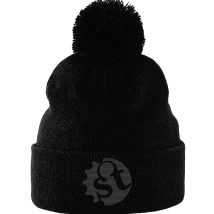
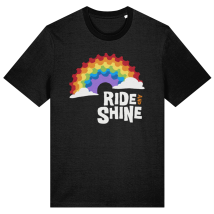
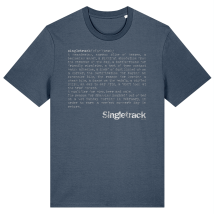
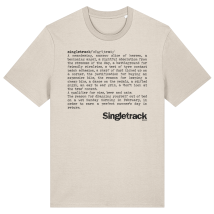

To sum up your review. It’s not rad enough for you but the plebs might be happy with it.
That may be a bit unfair Bruce, it sounds like Ben has given the bike a clear and fair appraisal — and it could suit a good section of this site’s demographic.
I ride an older Boardman hardtail a lot, even more XC focused than this. It’s great fun and often my bike of choice, but I don’t (successfully) try to do the same things I would on my enduro bike.
Could you use a 9point8 slack-r to adjust the headset angle? Though 65.5 is hardly steep.
*grinds teeth…
Nice to see they got ride of that hideous shaped frame on the last version. The old one was ugly
That there is an slx cassette ?, even says so on the back in one picture.
Yes the big black aluminium sprocket gives that cassette away as an SLX M7100.
I suspect I’d be one of the happy plebians. 130mm travel is good for a do everything bike in my book. However if it is too slack and long then it’d be slow/hard to wrestle around the tighter stuff on an XC circuit.
Does greater slackness really increase capability/speed on steeper stuff, or does it just make things feel more stable?
“Does greater slackness really increase capability/speed on steeper stuff, or does it just make things feel more stable?”
The former because of the latter!
I experimented a lot with this with my previous pair of hardtail and full-sus bikes, with anglesets, fork lengths and flip-chips. It made more difference than I expected when riding trails nearer the upper end of my gnar-ability.
The slacker the head angle, the longer the front centre and the lower the BB, the better the bike was on steep and rough trails. I didn’t take things very far, so I’m sure there’s a tipping point – but I got down to about 63.5 deg, sagged BB height of about 290mm but not so long on the front-centre (bikes were only about 450mm reach and 27.5 160mm forks).
My current bikes aren’t quite as low or slack as those extremes but the front-centres are longer (and the chainstays a bit too). That seems to work better all round for me – but I’m sure some would find them too slow to turn on twisty trails, they do require an active riding style.
My 29er hardtail is at 63.5* with a 130mm fork (SuperStar -2* Slackerizer)It’s only got a 440mm reach and 440mm rear centre but being 2* slacker than when I bought it has made it so much better at descending without it becoming worse on the flats and climbs.
My old Orange Alpine 160 was about the same after I fitted a -2* headset, longer fork and offset shock bushings and again rode better in all directions.
My ebike is about to get a Slackerizer to bring the head angle down to a about the same while allowing be to run it in the High/steep setting to allow a slack head angle but keep the same at angle and BB a bit higher.
I have yet to try a bike that wasn’t improved by a slacker head angle (although I haven’t ridden many modern super slack DH bikes enough
Not a bad bike by any stretch but in the current climate £2,500 buys you a heck of a lot of bike.
canyon selling spectrals with far far better spec (and more “modern” geometry) from £2,300
saracen Ariel 30 posh edition is £2,500 (and won Singletrack bike of the year at £4K rrp)
etc etc